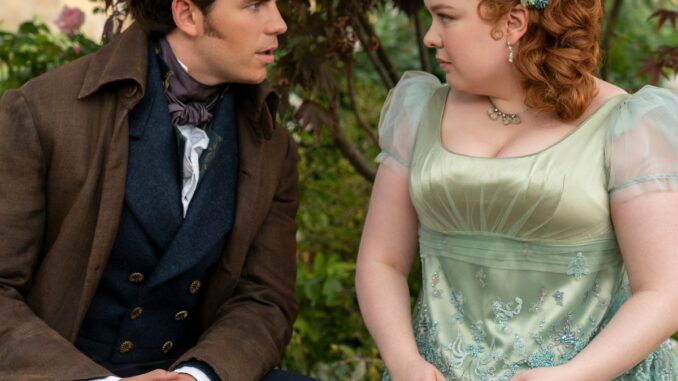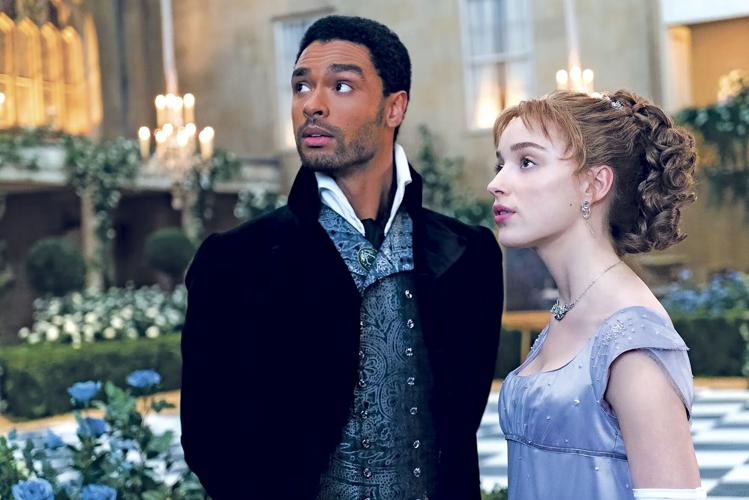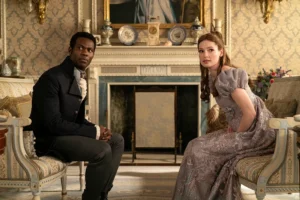
This summer has been one of excellent TV, but the third season of Netflix’s Bridgerton has got to be the “diamond of the season” — to borrow a phrase used by British Queen Charlotte to describe the most accomplished, beautiful and eligible maiden on the marriage market.
Adapted from Julia Quinn’s book series of the same name, Bridgerton follows the romances of the eight aristocratic Bridgerton siblings in Regency-era England. Combining trashy romance and drama with posh British accents and parties, viewers can’t help but flock to screens when new seasons drop.
One of the most notable things about the show is its diversity. Bridgerton replaces the nearly all-white Regency England that we know from history and creates a more accurate and holistic representation of our modern society, including through the exploration of interracial relationships. The current season of Bridgerton is the first to not have an interracial couple. Bridgerton‘s use of diversity, which is rarely addressed head-on in the show, speaks to larger arguments when it comes to diversity in media. Is it OK to have a diverse cast without mentioning anything about it? Or should race be touched on more? Is the race or ethnicity of a character a fundamental aspect that showrunners should explore?
At its core, the show is a frilly and escapist fantasy. But many people criticize the show’s insincerity when it comes to the realities of racism. Looking at Bridgerton at face value, it presents an alternative reality to our history, with a Black Queen of England and a diverse English aristocracy. While historians may cringe at the orchestral covers of pop songs, the show isn’t meant to be viewed with a highly intellectual scope.

The show has its shortcomings when it comes to race. For instance, whether known by the showrunners or not, the story development of Black characters is hindered by white characters in the first season. For example, Marina (Ruby Barker) is a distant cousin of the Featheringtons, one of the less fashionable aristocratic families and neighbors of the Bridgerton family. She starts out with a good chunk of the show’s screen time — her storyline is centered around her hidden pregnancy and her conflict with Lady Featherington, who despises the attention Marina gets for her beauty. But, as the first season progresses, her story feels like an afterthought that had to be tied up before the main plot involving Daphne — the fourth Bridgerton child, who is white — could truly shine.
It’s not just the ignorance of characters of color’s storylines that makes the show’s diversity seem off-putting, but the overall plot as well. World-building is a necessity in any TV show, and Bridgerton is no exception. The fantasy of a diverse period piece starts to crumble when looking at the history the show establishes. In the spinoff show Queen Charlotte: A Bridgerton Story (2023), which focuses on the love story between Queen Charlotte and King George III, the primary storyline is about the “Great Experiment,” which seeks to bestow royal titles and land to people of color and is dependent on a successful marriage between Charlotte and George.
In Queen Charlotte, it seems as if racism is solved overnight when this happens. The all-white court of King George became racially diverse as soon as he married Charlotte, with no real exploration of the likely conflict that would have occurred. While the show is fictional, it arguably loves to be diverse without truly reflecting on it.
While it can be argued that Bridgerton expanding on its compelling diversity is a positive thing, some viewers can’t help but be compelled to ask more questions. The show mentions the slave trade, but was it abolished in the show’s universe? If not, is it in good conscience that some people of color live in opulent, luxurious estates while others in the show are forced to work to fund it? When taking the show more seriously than it is, the loose threads in the Bridgerton world seem to unravel and disrupt the fantasy.
Though an argument can be made that Bridgerton‘s diversity is messy, I feel the Sharmas are at least one of the families in the show that bring authentic representation. The Sharmas are an aristocratic Indian family who come to England to make a match for the youngest Sharma daughter, Edwina. Being Indian American, I believe the show makes compelling and realistic conclusions about the Sharmas. They struggle to fit into England and sometimes yearn for their homeland. As someone raised by immigrants, I’ve seen the accuracy of these sentiments firsthand.
Also, small cultural references are made to show the blending of cultures. Edwina calls her older half-sister Kate “didi,” meaning older sister in Hindi. While Edwina has a Christian/Western wedding in accordance with her English surroundings, the Sharmas have a private Haldi ceremony, where the Sharma matriarch and Kate smear haldi, or turmeric, on Edwina’s skin.
In Western media, Indian weddings are accurately displayed as big, fabulous events that last for days. This ceremony is meant to bestow blessings upon whoever is getting married. By including this small but impactful scene, I was impressed that the show’s racial and cultural representations moved beyond lip service.
So while I can’t come up with a definitive answer to whether Bridgerton‘s diversity is performative or a step in the right direction, I’ll leave a final thought. In period dramas, the storylines for people of color tend to center around systemic oppression and racial aggression — rather than the rich inner lives of the people themselves. In some ways, this is true even in Bridgerton‘s attempts to explain its racially diverse world. However, the show also stays true to typical romance where endings are neatly and perfectly wrapped up for the viewer, which allows characters of color more personal character development. The show lets a modern audience see a world where happily ever after is available to us no matter what we look like.
For a lot of us hopeless romantics, Bridgerton is the answer to the all-white Austenian romances that we love but struggle to see ourselves in. The show presents us with a solution to the years of grasping for diverse stories by blending in some aspects of our culture with a wild, fantasy romance.

